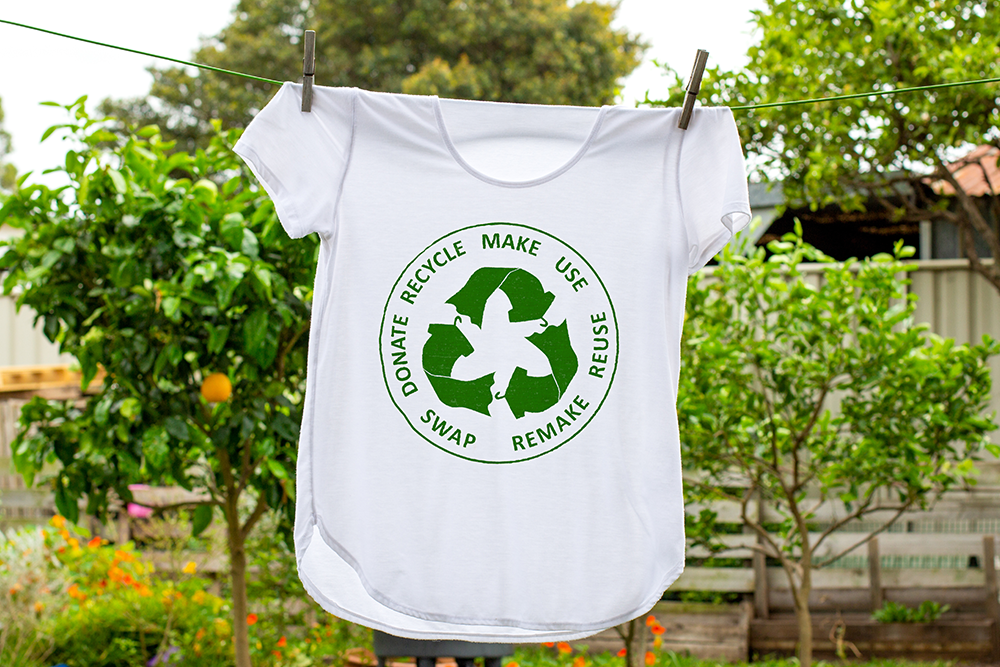The recently published CBOS survey on Poles’ attitude towards second-hand products clearly shows the changes that have taken place in society since 2008, when a similar study was previously conducted. Second hand and zero waste initiatives are gaining importance for consumers all over the world – and it is no different at our local level – so it is worth becoming aware not only of what attitudes are gaining strength, but also how business and marketing can adapt to the changing needs of customers.
Second-hand goods are no longer associated by Poles with poverty (a drop from 69% to 29%), and increasingly often become a symbol of care for the environment (an increase of 18%), as well as resourcefulness (an increase of 8%). Already over two thirds of Poles declare that they sometimes use second hand goods. Most of them (60%) buy them on their own, which means an increase of 12% since 2008.
We sell more and give more to the needy, not necessarily loved ones
Currently the largest percentage of Poles (39%) decide to give away unnecessary things in good condition to charity organizations or to the Church and the Polish Red Cross (an increase of 13%). 31% of respondents gift to family, friends and neighbors (down 10%). Storing unnecessary items in the hope that they will be useful is declared by 13% of respondents, throwing away unnecessary things by 7%. Only 6% of respondents decide to sell items (usually over the Internet, via OLX or Allegro), but this is an increase of 4% compared to the previous survey.
Second hand – in which categories?
The most popular category of products sold and donated is clothing and footwear (92%). Furniture and other home furnishings and decorations (30%), toys and other children’s items (26%), household appliances and audio/video devices (22%), books (19%) and electronic equipment including computers, cell phones and tablets (15%). The least often we get rid of sports equipment (6%), tools, records with films or music (5% each) and automotive articles (4%) are less popular.
Second-hand items are usually bought in second-hand stores, consignment stores (64%) or on the Internet, e.g. in auctions and classified ads (51%). Respondents declare that among second-hand items, they most often use second-hand clothing and footwear (73%), second-hand furniture and other home décor items (27%), second-hand books (22%), and second-hand electronics and household appliances (17%).
Second life of products – a threat or opportunity?
On the surface, it may seem that the second life of products may pose a threat to brands, since second-hand products can be bought back cheaper than from the manufacturer. However, it would be hard to fight the need to minimize owned and wasted items, which not only seems both rational in the current reality, but also with the approaching specter of climate and economic crisis, will only gain in popularity. Brands, especially in the categories that are most popular, can not only win over fans with more flexible solutions (such as the ability to rent, subscribe or swap products), but also expand their business into additional areas – beyond just selling new products.
It is worth taking a look at the inspirations and examples of brands that are already incorporating the idea of circularity into their business and marketing campaigns. For several years now, clothing chains such as H&M, KappAhl or Triumph have been offering customers discounts on new products in exchange for bringing used or unnecessary fabrics to the store for recycling. Zalando has opened a stationary store in Berlin that offers the brand’s “second-hand” clothes at attractive prices. Polish brand Osnowa not only has an outlet and second hand store with clothes of its brand, but the closed loop even applies to the packaging and shipping system. IKEA has introduced a Circular Hub in many of its stores, which is a bargain sales section that features post-exhibition furniture, customer returns or products in packaging with minor scratches or chips. Manufacturers of filter jugs like Dafi accept and recycle used filters, taking responsibility for the waste caused by them. The Decathlon Rent service lets you rent sports equipment without having to buy. Adidas has already created FUTURECRAFT in 2019. LOOP is a 100% recyclable running shoe – you can return it to Adidas where it will be recycled and reused to create new running shoes.
When brands go to sleep, new businesses wake up
What happens when the need for second marketing of products is large and unmet by manufacturers? New intermediary businesses for the categories are born. Loop, a service that allows people to buy beauty and food products from many popular brands in reusable returnable containers, remains an important but still fairly niche global initiative for the category. Swappie is a service that allows you to resell and repurchase cell phones of various brands. The Lithuanian startup that runs Vinted, a platform popular in Poland for selling second-hand clothes and shoes, raised EUR 250 million this year in another funding round that valued it at EUR 3.5 billion. The European Union has provided EUR 2.7 billion in 2019 alone for projects that will help accelerate the transition to a circular economy, as part of an initiative by six of the EU’s largest public financial institutions created to channel at least EUR 10 billion in investment to support the circular economy over five years (2019-2023).
When a brand wants to become more circular
Research by Erik Hansen (Johannes Kepler University) and Ferdinand Revellio (Leuphana University & Johannes Kepler University), who spent four years looking at the strategies used by various manufacturers and retailers to become more circular, was published in 2020. They identified four possible strategies for companies to engage in the closed loop economy:
- MAKE – i.e., build internal competencies in this area
- ALLY – allying with organizations that have experience in closed-loop economics
- BUY – i.e. buying closed-loop services from external contractors (outsourcing)
- DO NOTHING – doing nothing while unrelated circular suppliers offer services to their customers
These strategies represent different levels of investment and commitment to the closed loop economy. “MAKE” represents full integration into the business model, “ALLY” represents strategic partnerships, while “BUY” is about compliance – compliance.
As the used products marketplace changes, it’s worth considering whether there is an opportunity for a category, for a brand, to create initiatives in the spirit of a second-circuit economy. It’s certainly a big strategic intervention in the business model, and not just a purely marketing activity, but definitely such authentic actions allow to gain credibility of the brand’s green attitude in the eyes of consumers in a world full of greenwashing.
Sources:
https://www.nbs.net/articles/4-ways-to-make-your-business-circular

.

